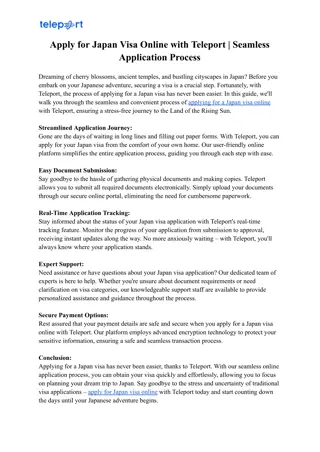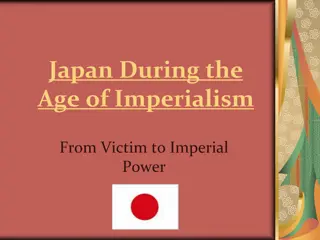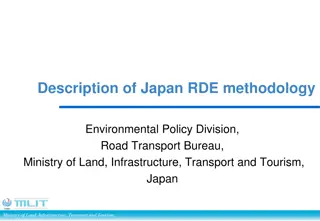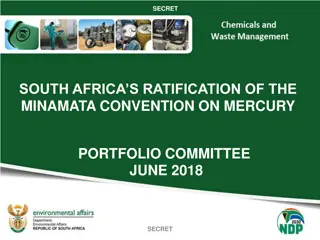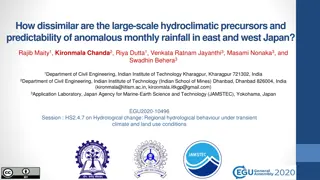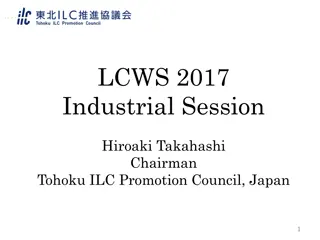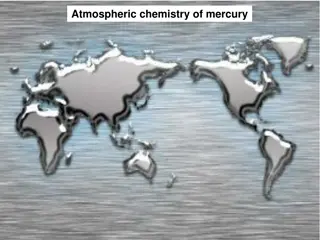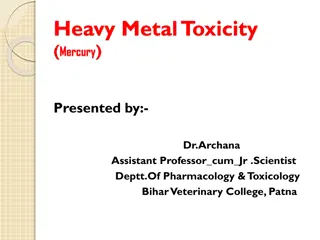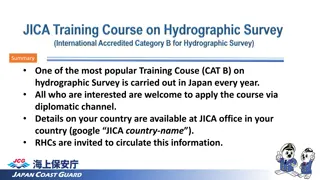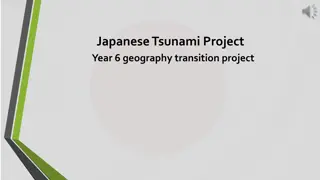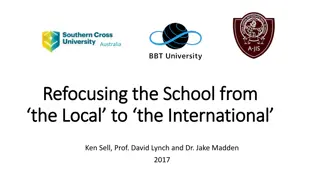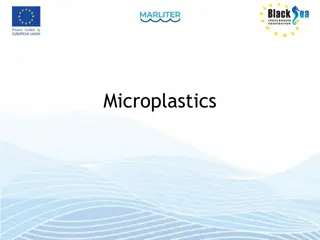Understanding Minamata Disease: A Case of Bioaccumulation in Japan
Minamata Disease, a tragic incident in a coastal town in Japan, serves as a real-life example of bioaccumulation. In the 1950s, a large number of people suffered health issues and disabilities due to mercury poisoning, caused by industrial wastewater contaminating the local seafood. The devastating effects on the community highlight the importance of environmental awareness and sustainable practices.
Download Presentation

Please find below an Image/Link to download the presentation.
The content on the website is provided AS IS for your information and personal use only. It may not be sold, licensed, or shared on other websites without obtaining consent from the author. Download presentation by click this link. If you encounter any issues during the download, it is possible that the publisher has removed the file from their server.
E N D
Presentation Transcript
IB Environmental Systems and Societies
Entry requirements English Grade 5 Biology Grade 5 Geography GCSE is not a requirement but is helpful. This IB will work well with Biology A level/IB, Geography A Level, animal care/management courses, business courses (as businesses are looking to become much more sustainable).
Topic 2 Ecosystems: Bioaccumulation The following task will demonstrate a real life case of bioaccumulation that we know as Minamata disease. You will be given a series of clues , after each one you will make an educated guess as to the cause of Minamata disease.
1 Minamata Bay is a coastal town on the Japanese island of Kyushu In the 1950s more than 900 people were killed. An estimated 2 million people from the area suffered health problems or were left permanently disabled.
2 Minamata is a fishing port.
3 The people there, like most Japanese people, eat a diet primarily of fish and shellfish.
4 mercury_drop_copy The Chisso corporation had a big factory in Minamata. From 1945 onwards it was making lots of acetylaldehyde used for plastic. Mercury is a byproduct of this process
5 Around 1952 cats in the fishing port began to exhibit bizarre behaviour, the effects were severe enough that they came to be named as having dancing cat fever that sometimes resulted in their falling into the bay and dying, in what residents referred to as "cat suicides."
6 On April 21, 1956, a five year- old girl was examined at a hospital in Minamata. She had puzzling symptoms: difficulty walking, difficulty speaking and convulsions They soon found other family members and local children with the same symptoms
7 More and more people were showing symptoms. They would stumble whilst walking, not be able to write, have trouble hearing or swallowing, or tremble uncontrollably. In 1956 an apparent epidemic broke out and one can imagine the confusion--and fear--that was prevalent because no one knew the cause.
8 The factory was dumping its waste water which flows into the Bay which the locals fish from
The Answer: Mercury poisoning! Mercury from the Chisso plant was released in the waste water which was absorbed by the fish and shellfish in the Bay. Cats were eating the fish scraps from the fishermen and mercury built up in their bodies first. The locals, eating the fish and shellfish from the bay, had mercury building up in their bodies until it became toxic
bioaccumulation of methylmercury Bioaccumulation. The fish absorb a small amount of mercury, not enough to affect them. The humans and cats eat many fish so get a larger concentration. Cats have small bodies and are affected first. Then children and finally adults show signs
Want to know more? Watch the film Minamata released 21st Feb 2021
Topic 4: Water Water pollution https://www.youtube.com/watch?v=H_PzWo hHz30 Deep water horizon. What does this have to do with the topic of Water? The Deepwater Horizon oil spill was an industrial disaster that began on April 20, 2010, in the Gulf of Mexico operated by BP and considered to be the largest marine oil spill in the history of the petroleum industry. SO WHAT?
Water pollution, both to groundwater and surface water, is a major global problem, the effects of which influence human and other biological systems.
Whats so bad about an oil spill? https://www.youtube.com/watch?v=UkATPicHIo4 https://www.youtube.com/watch?v=YuT4pfgVc4 c It s not just oil https://www.youtube.com/watch?v=HQTUWK7C M-Y
What can we do? Studying Environmental science will enable you to pursue a career that will help save the environment and encourage people to live sustainably. Aaron did just that and has never looked back
Competition time Get into groups of no more than 3. Design a poster that will inspire people to become more involved with looking after the planet. Spend 10 minutes researching Then 15 minutes creating Then 1 minute presentation to the class. Prize for the best, most convincing presentation voted for by the class.
Topics for the competition Plastic in the oceans Reuse, recycle, reduce Sustainable buildings Sustainable cities Electric cars Reducing the amount of meat we eat What can we do at home?



